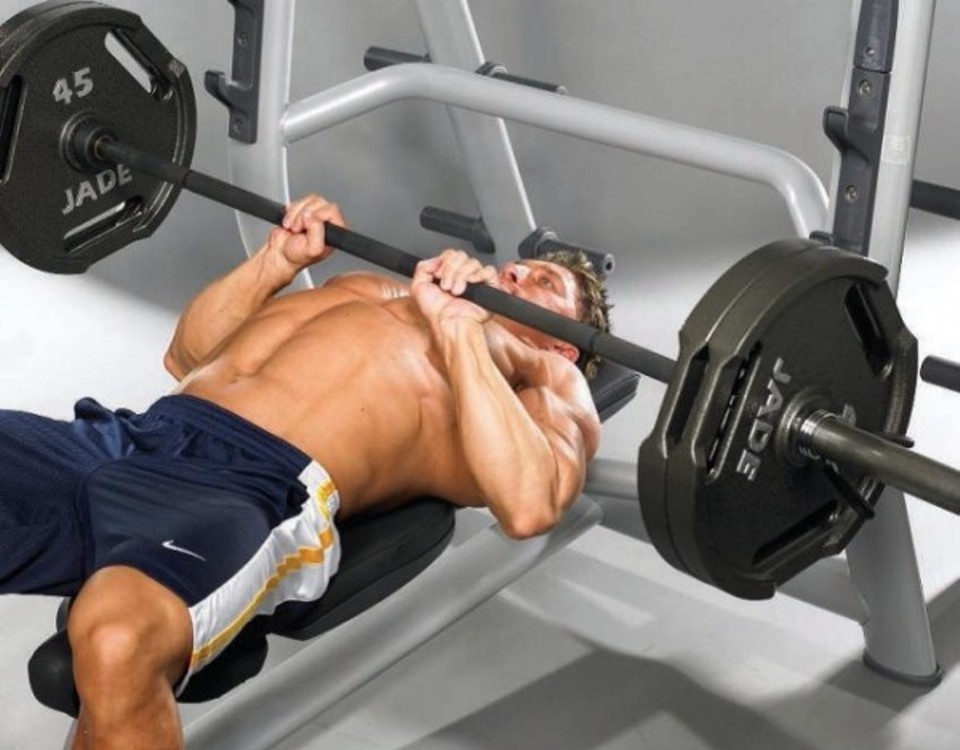5 Ways to Boost Your Bench Press

If you are a gym regular, one of the most common things people ask you is “How much do you bench?”. The bench press is the most often used measuring stick of strength in the gym. And there’s nothing quite like the feel of pushing big weight on the bench press. So if your bench press simply sucks or if you tend to make up numbers when people ask how much you bench, here are five best ways for boosting your bench in a hurry.
1. Train your upper back
One of the best ways to increase your numbers on the bench press is working your upper back. Without a strong upper back, it is very difficult or almost impossible to stabilize heavy weight on either side of the repetition – the negative and positive phase. To develop your upper back focus on mass-building exercises like barbell rows, T-bar rows, pull-ups, dumbbell rows and pulldowns in the 8-12 rep range on back day. And make sure not to neglect your rear delt raises on back or shoulder day. Training your rear delts with regularity will also help you take your bench higher, faster. Aim for the same rep ranges (8-12) as your back.
2. Improve shoulder stability
Shoulder stability also plays a key role when you are trying to increase your bench. The more stable your shoulders are, the better you exert control and power in lowering and pushing the weight load. To improve your shoulder stability, balance all your pressing work with rows, chin ups, and cable face pulls to improve the shoulders’ ability to retract. Additionally, focus on improving your shoulder and rotator cuff strength on days you do not do bench press. The rotator cuff consists of four small muscles in the shoulder that work to stabilize the shoulder joint during pressing exercises. Direct rotator cuff training using exercises such as internal and external rotations can help to increase your bench press by 10 to 20 lbs.
3. Tighten your glutes
By tightening up your glutes as you perform the bench, you will help reinforce that stability that the body needs so that you can channel power from your legs through your core to your chest. You will be amazed at how well this can work, especially when you find yourself plateaued at certain weight level. Additionally, training other muscles used in the bench press, such as triceps, back, quadriceps, glutes, and core, can help increase your bench press.
4. Work on your grip
Grip strength and width are huge factors in maximizing your bench. Grip strength translates to more poundage on the bench press by providing greater wrist stabilization. With shaky wrists and weak forearms, you have less control of the bar, which is particularly troublesome if you’re into pressing heavy weight loads. Plus, keeping your wrists locked helps you maintain proper form. To train your grip, grab a hold of a 45-pound plate in each hand at the fingertips and perform as many finger curls (lifting the edge of the plate towards your palm) as you can. Rest for 30 seconds and keep going until your forearms fail. Similarly, grip width impacts the load you are able to move. Use a double-overhand grip on the bar with your hands slightly wider than shoulder-width apart. Any narrower and your triceps will take more of the strain, limiting lifting strength. Keep it shoulder width, and never outside the rings on the barbell. The wider you go, the more stress you’re putting on your shoulders, and the less impact your triceps have on the lift.
5. Perform negatives
Performing heavy negatives can do wonders for building your bench strength. Negatives are reps that concentrate on the eccentric or lowering phase of an exercise. Your muscles can handle 30-40% more weight on the negative portion of a rep, so taking advantage can help boost your bench bigger and faster by training your chest to deal with heavier weights. To perform negatives on the bench, add 30-40% more weight than you’d normally use for 10 reps. So if you’re pressing 250 pounds for 10 reps, add an extra 75 pounds (30%) onto the bar. Unrack the weight and resist the negative all the way down for a full five seconds or more. Once the bar touches your chest, have your training partner help you bring the bar back up to the starting position and repeat this for 3-5 total agonizing reps. to avoid overtraining or injury, use this method sparingly on your 1-3 sets, once or twice per month.



